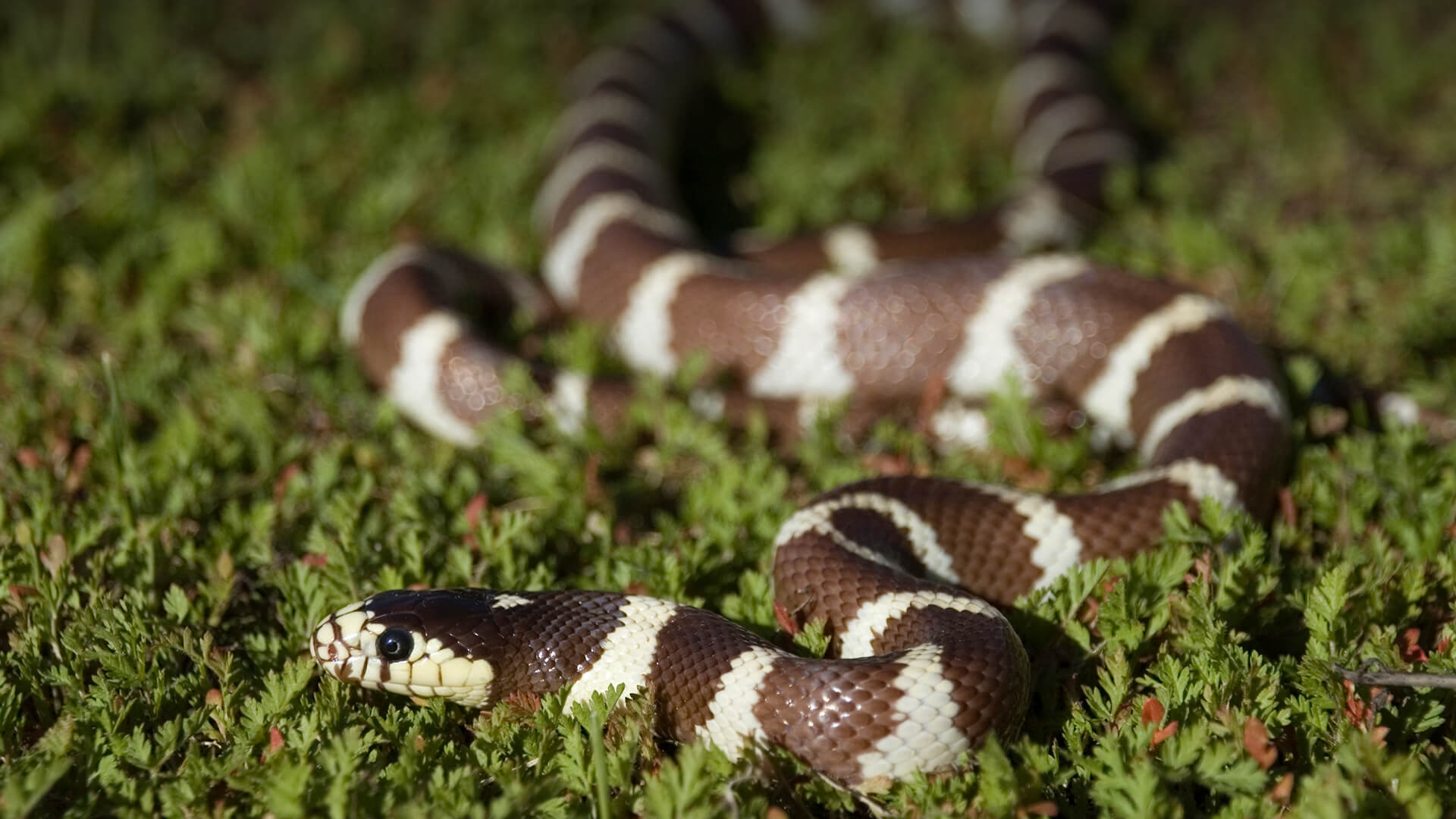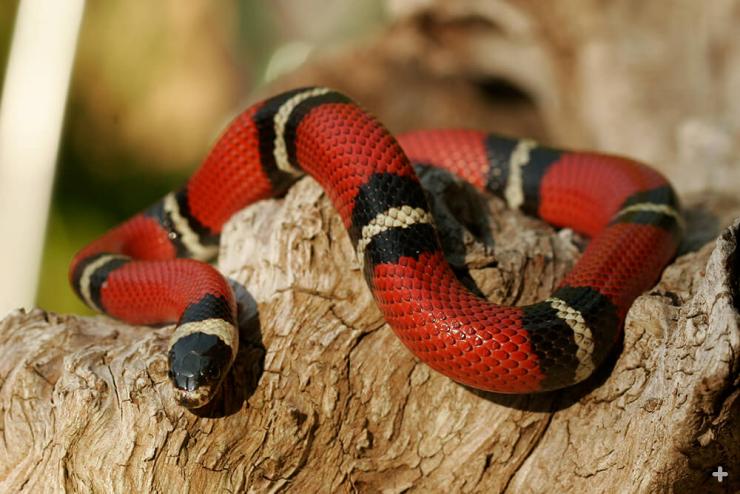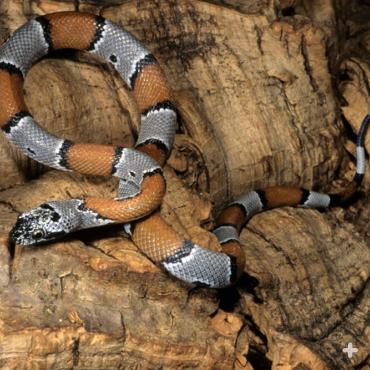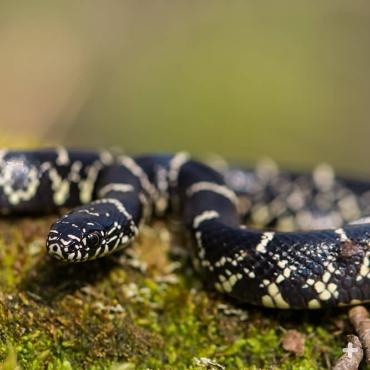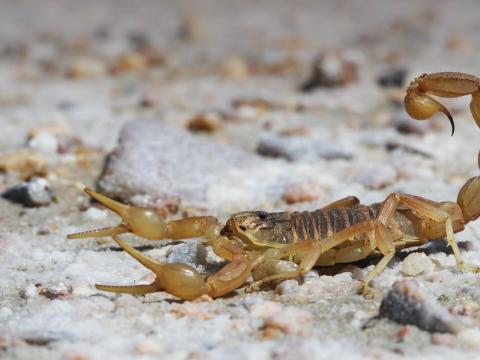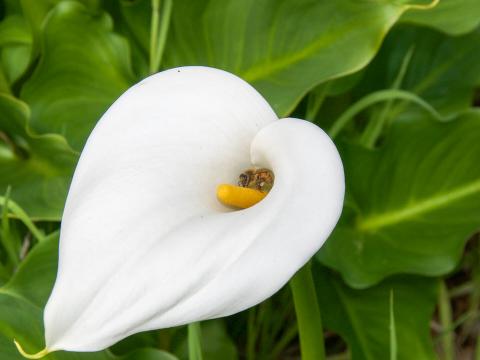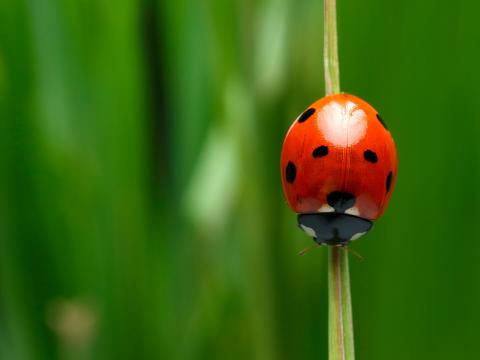Kingsnake
- CLASS: Reptilia (Reptiles)
- ORDER: Squamata
- FAMILY: Colubridae
- GENUS: Lampropeltis
- SPECIES: 10
ABOUT
The king of snakes: If you've lived in California for a while, chances are good that you've encountered a king—a kingsnake, that is! Kingsnakes are one of the most widespread snakes in the US. They are ground-dwelling snakes that often kill and eat other snakes, even venomous ones, including rattlesnakes, copperheads, and cottonmouths—kingsnakes are highly resistant to their venom.
Kingsnakes have a number of pattern and color variations. The most common and easily recognized pattern is banding, usually light-colored bands on a darker background. Some California kingsnakes have stripes that run along the body from head to tail. Stripes are much less common than bands, although California kingsnakes in San Diego and Riverside counties often have them.
Sometimes the stripes are broken up into dot-dashes or even separated into spots! These patterns break up the snake's body outline so it is less noticeable to predators like hawks, eagles, coyotes, raccoons, foxes, skunks, bobcats, and even other kingsnakes.
Some kingsnakes, such as the scarlet kingsnake and California mountain kingsnake, have almost the same coloration and patterning as venomous coral snakes, making it easy to confuse them. There is a rhyme to help you tell a deadly coral snake from its nonvenomous look-alike: “Red on yellow, kill a fellow; red on black, venom lack.”
This rhyme refers to the color of the bands on the snake. This rule goes out the window south of the border. In Latin America, there are many different coral snakes with a multitude of this red, black, yellow, and white combination. So, unless you are a trained snake handler, don't touch any banded snakes!
One type of kingsnake is the milksnake L. triangulum, also known as a tricolor or tricolored king. A common myth about milksnakes is that they suck the milk out of a cow's udders! Many milksnakes are indeed found in barns, but they are looking for mice, not milk.
HABITAT AND DIET
King snakes make their home in rock outcrops, brushy hillsides, river valleys, woodlands, fields, and pine forests; and range from southeastern Canada to southern Ecuador. In Southern California, kingsnakes can be found cruising around during the day in search of food or a mate. You might also find one out and about at dusk or dawn. In most other parts of the US where kingsnakes occur, they are nocturnal. This may be because it is much hotter during the day, and Southern California has such a moderate climate. They may become more nocturnal as summer gets warmer.
During the fall, most kingsnakes find a place to hibernate until spring, unless they live in a warmer climate like Southern California, where they are much less active and can go dormant or into a short “pseudo-hibernation.”
Besides eating other snakes, kings also dine on lizards, rodents, birds, and eggs, counting on their strong stomach acid to dissolve their prey. Since they do not produce venom, kingsnakes use constriction to subdue their prey. Kingsnakes are active hunters, seeking out prey, not ambush hunters like rattlesnakes.
Once food is located by scent, the snake grabs it in its mouth, coiling around it in a split second and tightening until its prey cannot breathe. Depending on the size of the meal, the kingsnake may not eat again for several days.
FAMILY LIFE
Goodbye, Mom! An adult female lays a clutch of eggs under leaves in the ground or a rotting log during early summer and then leaves the eggs, which hatch unattended two to three months later. Each hatchling is only a few inches long, but is completely independent from the moment it breaks out of the shell.
CONSERVATION
The Todos Santos Island kingsnake L. herrerae is at critical risk. Found on only one island, Isla Todos Santos, off the coast of Baja California, Mexico, the few snakes living there are often collected for the pet trade.
The state of California considers the San Diego mountain kingsnake L. zonata pulchra to be vulnerable. California laws prevent the sale of native reptiles, but some snake collectors ignore the law and overcollect this snake.
All snakes always seem to be under attack just for being snakes. Too many people think all snakes are dangerous and should be killed on sight. Yet snakes, especially our local kingsnakes and gopher snakes, are extremely important for controlling rodent populations. If you see one of these beautiful creatures while out jogging, hiking, or just relaxing in your garden, enjoy it and consider yourself lucky to be in the presence of a king!
By supporting San Diego Zoo Wildlife Alliance, you are our ally in saving and protecting wildlife worldwide.

